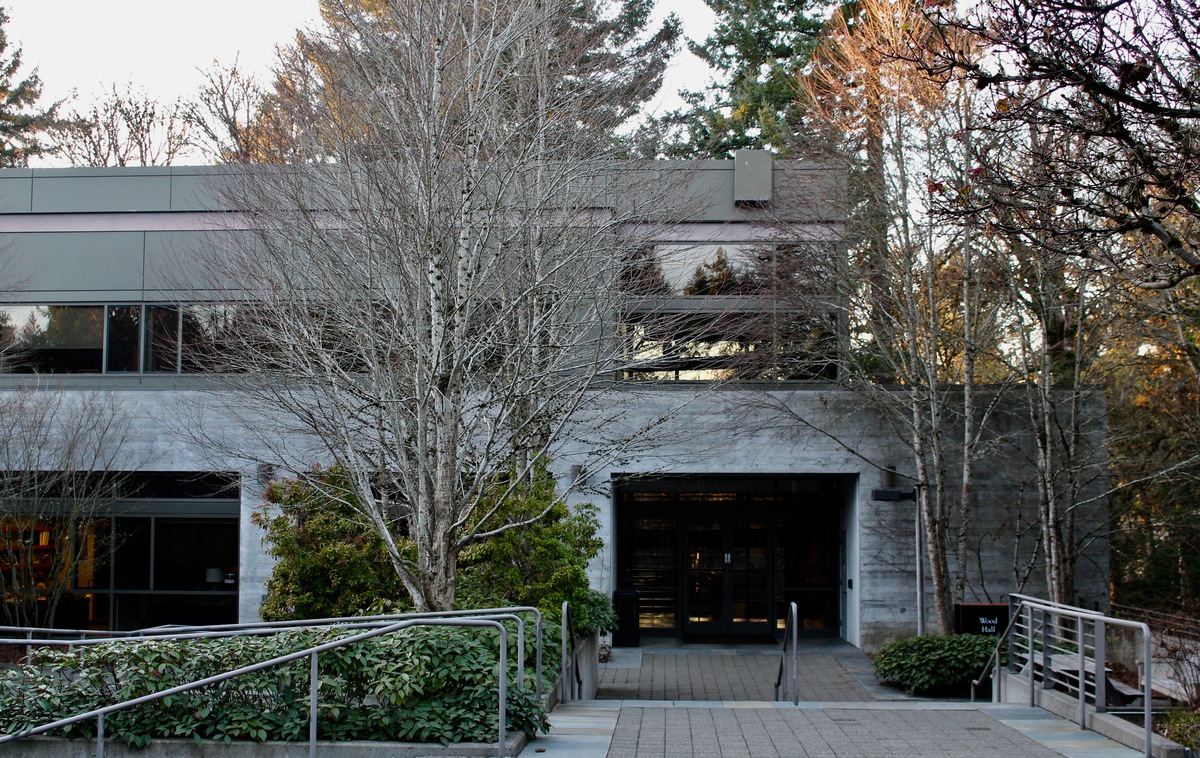
The law school of Lewis & Clark was not always such. Founded in 1884, it was originally the law department for the University of Oregon. Consisting of 10 students and five faculty members, the Portland satellite campus was the second law school established west of the Rocky Mountains, and the first to be established in Oregon.
County Circuit Judge Richard Thornton was elected as the dean, and in 1886, the law department graduated its first class of just two students. In these early years, the law program was two years long, and the class met for three hours per week around a single table. In 1906, hours were increased to six per week, and the program was extended to a duration of three years.
In 1903, Calvin Gantenbein, 1891 graduate of the University of Oregon Law Department, became dean. Five years later he was elected judge of the Circuit Court of the state of Oregon, but still continued to act as dean of the law department.
In 1913, the Board of Regents of the University of Oregon decided to move the law department to its main campus in Eugene, but Gantenbein resisted the move and decided to purchase the school with his own assets that same year. All operations remained in Portland, and the school continued to operate under a new name, the Northwestern College of Law. In 1918, Northwestern graduated a class of 10 students.
Gantenbein died the next year and was replaced by District Court Judge J. Hunt Hendrickson. A graduate of Harvard Law School, Hendrickson had already been teaching the course on contracts at Northwestern before he took the position as dean of the college. In 1924, Hendrickson facilitated the relocation of the school from the Multnomah County Courthouse to the top floor of the Sherlock building in Southwest Portland.
Until the U.S. entered World War II, Northwestern progressed steadily, graduating 20 to 30 students every year. This totaled to over 600 graduates by the end of 1941. The intense economic circumstances brought on by the war were not insignificant for Northwestern; it was through the sheer dedication of Calvin Gantenbein’s son John (who held the position of registrar, but at this time was completing all the duties of dean) that the school remained open. Gantenbein refrained from taking a salary for the duration of the war, as well as working a graveyard shift at a shipyard to pay the bills of the school. During the war years, enrollment at Northwestern fell to a mere 16 students.
In 1947, Gantenbein purchased the remaining shares of the school from his brothers and sisters, and in 1958 sold Northwestern College of Law to a local nonprofit for $85,000. Under John Gantenbein’s leadership, Northwestern continued to grow; by 1962, 200 students were enrolled, making Northwestern the largest law school in Oregon.
In light of this rapid growth, the trustees began to worry that Northwestern had not yet been approved by the American Bar Association (ABA). The very aspects that Northwestern considered unique were the things disqualifying it; it only required two years of college before admittance while the Bar required three, it did not operate out of its own building and it did not have a completely full-time faculty. The Northwestern Board of Trustees began to look for a larger institution to affiliate with, as they believed this was the only way to earn ABA approval.
After offers from the University of Oregon, Pacific University, Willamette University and the University of Portland, Northwestern trustees elected in 1965 to merge with LC, becoming the Northwestern School of Law of Lewis & Clark College, as we know it today.
In 1970, the new $1,500,000 law building was completed, and the first class of 120 students started that same year. The ABA granted the newly formed Northwestern School of Law of Lewis & Clark College provisional approval for that school year, and the school was granted full approval in 1973.
Subscribe to the Mossy Log Newsletter
Stay up to date with the goings-on at Lewis & Clark! Get the top stories or your favorite section delivered to your inbox whenever we release a new issue.

Leave a Reply